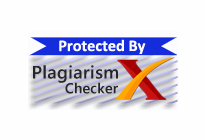ANALISIS CAPITAL EXPENDITURE
Abstract
This research uses panel data which is a combination of time series data and cross section data. Time series data for 3 years, from 2016-2018. As well as cross section data of 27 districts / cities. Incomplete data, no data on Revenue Sharing Funds are Indramayu District and Bekasi City. So that the cross section data used in the study were 25 districts/ cities. The number of observations (n) is 75. Source of data comes from the Directorate General of Fiscal Balance. The data used is the data on the realization of the West Java Regional Budget. The results of the research based on the t test prove that only the Regional Original Income variable partially has a significant effect on capital expenditures in regencies/ cities in West Java. Meanwhile, the General Allocation Fund, the Special Allocation Fund and the Profit Sharing Fund partially have no effect on Regional Original Income. The F test proves that the Regional Original Income, the General Allocation Fund the Special Allocation Fund and the Revenue Sharing Fund simultaneously have an effect on Regency/ City Capital Expenditures in
2
West Java. The result of the coefficient of determination (Ajd R ) is 0.772. This means that
Regional Original Income, General Allocation Fund, Special Allocation Fund and Share Fund are able to explain the variability of Capital Expenditure of 77.20 percent, the remaining 22.8 percent is explained by other variables outside the model. It can be concluded that Regency / City Capital Expenditures in West Java rely on Regional Original Income.
Downloads
The use of the article will be governed by the Creative Commons Attribution license as currently displayed on Creative Commons Attribution 4.0 International License.
Author’s Warranties
The author warrants that the article is original, written by stated author(s), has not been published before, contains no unlawful statements, does not infringe the rights of others, is subject to copyright that is vested exclusively in the author and free of any third party rights, and that any necessary written permissions to quote from other sources have been obtained by the author(s).
User Rights
JSS's spirit is to disseminate articles published are as free as possible. Under the Creative Commons license, JSS permits users to copy, distribute, display, and perform the work. Users will also need to attribute authors and JSS on distributing works in the journal.
Rights of Authors
Authors retain all their rights to the published works, such as (but not limited to) the following rights;
- Copyright and other proprietary rights relating to the article, such as patent rights,
- The right to use the substance of the article in own future works, including lectures and books,
- The right to reproduce the article for own purposes,
- The right to self-archive the article,
- The right to enter into separate, additional contractual arrangements for distribution of the article's published version (e.g., post it to an institutional repository or publish it in a book), with an acknowledgment of its initial publication in this journal (Jurnal STIE SEMARANG).
Co-Authorship
If the article was jointly prepared by other authors, any authors submitting the manuscript warrants that he/she has been authorized by all co-authors to be agreed on this copyright and license notice (agreement) on their behalf, and agrees to inform his/her co-authors of the terms of this policy. JSS will not be held liable for anything that may arise due to the author(s) internal dispute. JSS will only communicate with the corresponding author.
Royalties
This agreement entitles the author to no royalties or other fees. To such extent as legally permissible, the author waives his or her right to collect royalties relative to the article in respect of any use of the article by JSS.
Miscellaneous
JSS will publish the article (or have it published) in the journal if the article’s editorial process is successfully completed. JSS's editors may modify the article to a style of punctuation, spelling, capitalization, referencing and usage that deems appropriate. The author acknowledges that the article may be published so that it will be publicly accessible and such access will be free of charge for the readers as mentioned in point 3.





.png)





